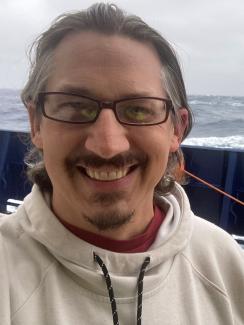Event
EES Seminar Series - Dr. Peter Morton
“Proceed with Caution: Addressing the Opportunities and Hazards of Sargassum Inundation”

The Department of Earth & Environmental Science
University of Pennsylvania
Invites you to attend a EES Seminar Series
Friday, February 2, 2024 - 3:00 PM
“Proceed with Caution: Addressing the Opportunities and Hazards of Sargassum Inundation”
The Great Atlantic Sargassum Belt has been steadily increasing in size since 2010, inundating coastlines throughout the Gulf of Mexico and Caribbean with mounds of decaying macroalgae for federal, state, and coastal communities to address. Current evidence for this recent rapid expansion implicates an increasing supply of unbalanced nutrients to the ocean from multiple sources. This nutrient supply has driven dramatic changes in the Sargassum biomass composition over the last 40 years: an increase of the N composition of Sargassum by 35% and a concurrent decrease of P by 44%. The causes are global in scale and beyond the resources and responsibilities of a single state or nation to solve.
Because Sargassum provides a critical habitat for numerous marine species in the open ocean, the approaching Sargassum inundation cannot be addressed until it reaches the shore. Removing the material from the beach costs governments millions of dollars annually while disrupting coastal ecology (e.g., sea grass beds and sea turtle nesting grounds) and human economies (e.g., tourism and fisheries). Leaving Sargassum to decay naturally could release potentially toxic concentrations of hydrogen sulfide, ammonia, and arsenic, posing additional risks to human health and the environment.
On the other hand, creative entrepreneurs view the Sargassum problem as an opportunity. Economically profitable proposals include converting the nutrient-rich biomass into fertilizer or animal feed. However, many of the same hazards remain, especially the potentially toxic concentrations of arsenic. These chemical hazards should be thoroughly considered before economic exploitation rushes to “make lemonade from lemons.”
Dr. Peter Morton
Associate Research Scientist
Department of Oceanography
Texas A&M University
Peter Morton is an Associate Research Scientist at Texas A&M University, with specialties in marine trace metals and analytical chemistry, including particle cycling (Fitzsimmons et al., 2015; Marsay et al., 2018; Morton et al., 2019; Whitmore et al., 2019), atmospheric transport (Morton et al., 2013; Shelley et al., 2015; Wozniak et al., 2013), and method development (Milne et al., 2010; Ohnemus et al., 2014).
Dr. Morton has extensive experience in oceanographic field research, including seagoing trace metal sampling techniques and equipment, shipboard analytical instrumentation, and shore-based instrumental and chemical method development. He has participated in 18 major oceanographic expeditions since 2002 on both CLIVAR (A16N 2013; North Atlantic) and GEOTRACES (North Atlantic 2010/2011, Arctic Ocean 2015) projects.
Dr. Morton is recently funded by the U.S. National Science Foundation to study (a) trace metal fluxes in the Indonesian Through-Flow along the northwest coast of Australia and (b) the biogeochemical cycling of particulate trace metals in the Amundsen Sea of the Southern Ocean.
